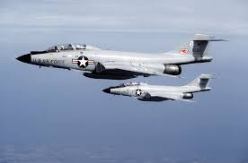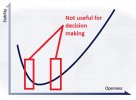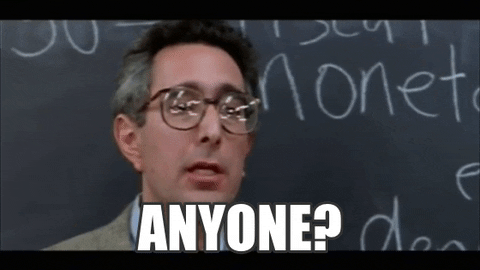-
Please take a moment and update your account profile. If you have an updated account profile with basic information on why you are on Air Warriors it will help other people respond to your posts. How do you update your profile you ask?
Go here:
Edit Account Details and Profile
You are using an out of date browser. It may not display this or other websites correctly.
You should upgrade or use an alternative browser.
You should upgrade or use an alternative browser.
How about that North Korea?
- Thread starter xj220
- Start date
"The developed world should neither shelter nor militarily destabilize authoritarian regimes—unless those regimes represent an imminent threat to the national security of other states. Developed states should instead work to create the conditions most favorable for a closed regime’s safe passage through the least stable segment of the J curve — however and whenever the slide toward instability comes. And developed states should minimize the risk these states pose the rest of the world as their transition toward modernity begins."Do yourselves a favor and read Ian Bremmer's J-Curve.
Eh. Interesting concept on face value, given the DPRK's of present day. But Bremmer's model only holds true from 1900-present, and even then seems full of exceptions. Doesn't at all explain early human civilizations, the holy roman empire, dark ages, middle ages, renaissance, or even the first half of U.S. history. The American Revolution and U.S. Civil War are pretty stark outliers of instability sprouting directly from the world's [at the time] most open societies. The French Revolution somewhat, too, as the Terreur ended and Napoleon brought some stability amid the chaos. Sort of makes sense that the J curve model has so many exceptions, seeing as the concept of the "nation state" was ill-defined until the late 1800s (roughly around the time of the forming of Italy & Germany from various principalities). I'll take Plato, Hobbes, Locke, Rousseau, A. Smith, and Machiavelli any day over the J curve at explaining human behavior in a world of infinite wants and finite resources.Do yourselves a favor and read Ian Bremmer's J-Curve.
Last edited:
I think your missing Brett's point Hair Warrior (get a better name). The J curve works with North Korea with regard to leaving them alone, and we're discussing North Korea not the history of nation states. Nukes haven't been used as a viable weapon since 09/45. These shit hole regimes have been seeing what can happen when we go to war with them since Desert Storm and they realize that having nukes will make us pause.
Last edited:
National Review briefly wargames a potential conflict. Everyone and their brother has pontificated, postulated, or just wanked on that subject for the past 64 years, it seems. What struck me was the beginning quote from an Indian GOFO. To wit: It's feasible to plan to go to war with the US if you have nukes . . . the assumption being that moral principles be damned, we'll never trade a city full of brown people (or at least fuzzy foreigners) for one of our own. So we can be blackmailed.
The National Review...it seems like some ying to that yang might be in order.
FTA: "Ignorant of the long history of the problem, Trump at least brings fresh eyes to it. But he is going to collide with the same harsh truth that has stymied all his recent predecessors: There are no good options for dealing with North Korea. Meanwhile, he is enthusiastically if unwittingly playing the role assigned to him by the comic-book-style foundation myth of the Democratic People’s Republic of Korea." - Bowden.
FTA: "Ignorant of the long history of the problem, Trump at least brings fresh eyes to it. But he is going to collide with the same harsh truth that has stymied all his recent predecessors: There are no good options for dealing with North Korea. Meanwhile, he is enthusiastically if unwittingly playing the role assigned to him by the comic-book-style foundation myth of the Democratic People’s Republic of Korea." - Bowden.
So, I get this daily email at work about things going on in the National Guard. One of the articles is about wargaming a nuke on Macdill. It's a little interesting.
BUT, if you want to waste a day at work, go to the this link they put in the article. You can spend all day seeing what the effects of different nukes have on different locations. Kind of like the old Matthew Broderick movie Wargames, but with better graphics and more detailed predictions. Think WHOPPER 2.0.
Try the 100 mt Tsar Bomba on Hollywood/Beverly Hills. Oh, and a single Titan II on Pyongyang wouldn't bode well for the fat kid.
BUT, if you want to waste a day at work, go to the this link they put in the article. You can spend all day seeing what the effects of different nukes have on different locations. Kind of like the old Matthew Broderick movie Wargames, but with better graphics and more detailed predictions. Think WHOPPER 2.0.
Try the 100 mt Tsar Bomba on Hollywood/Beverly Hills. Oh, and a single Titan II on Pyongyang wouldn't bode well for the fat kid.
Understood. But I still think the J curve model is iffy (i.e. the model does not have a high correlation to present-day events).I think your missing Brett's point Hair Warrior (get a better name). The J curve works with North Korea with regard to leaving them alone, and we're discussing North Korea not the history of nation states. Nukes haven't been used as a viable weapon since 09/45. These shit hole regimes have been seeing what can happen when we go to war with them since Desert Storm and they realize that having nukes will make us pause.
Example: Venezuela under Hugo was relatively closed, so we'd plot its X-Y position on the left part of the spectrum. As Maduro tightened his grip on power, ostensibly moving further left on the curve, the country destabilized -- the opposite of what the J curve would expect to see.
J curve proponents might say "Venezuela's recent X-Y position actually began just to the right of the lowest dip in the curve, not to the left of it, because the country was semi-open. Therefore, Maduro tightening societal control will in fact destabilize the country by moving left on the J curve, and the model still holds true." Okay... but then the model becomes useless if the country's X-Y position is anywhere near the two red boxes (see image). Which is where, arguably, a number of countries currently sit. The experiment is no longer repeatable with the same results. Is Cuba to the right or the left of the lowest dip? Where's China on the curve today?
Attachments
There's not ONE curve for the entire world. Each country has its own curve that can also translate around the axes. Remember, it's a theory, not a predictive model.Understood. But I still think the J curve model is iffy (i.e. the model does not have a high correlation to present-day events).
Example: Venezuela under Hugo was relatively closed, so we'd plot its X-Y position on the left part of the spectrum. As Maduro tightened his grip on power, ostensibly moving further left on the curve, the country destabilized -- the opposite of what the J curve would expect to see.
J curve proponents might say "Venezuela's recent X-Y position actually began just to the right of the lowest dip in the curve, not to the left of it, because the country was semi-open. Therefore, Maduro tightening societal control will in fact destabilize the country by moving left on the J curve, and the model still holds true." Okay... but then the model becomes useless if the country's X-Y position is anywhere near the two red boxes (see image). Which is where, arguably, a number of countries currently sit. The experiment is no longer repeatable with the same results. Is Cuba to the right or the left of the lowest dip? Where's China on the curve today?
J curve proponents might say "...
Cool theory. I especially like the "adjust argument to fit the facts" aspect. A picture is worth a thousand words, but lending too much credence to an arbitrary curve can get you killed.

Vooooodooooo

Shortly after it popped into your head, did it get into a deep stall, spin, and crash?Sorry..........first thing that popped into my head.


